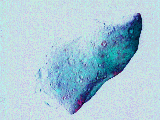In 1991 the Galileo spacecraft photographed the asteroid, Gaspra. This picture shows the asteroid in false color. Gaspra circles the Sun between Mars and Jupiter.
Click on image for full size
NASA/JPL
Japan And U.S. Join Together for Asteroid Expedition
News story originally written on June 20, 1997
The first asteroid collection mission has been set. Japan and the United States will put joint efforts into the MUSES-C mission to be launched in January 2002 from Kagoshima Space Center, Japan. This will allow the spacecraft to arrive at the NEREUS asteroid in September 2003.
Nereus is a small asteroid approximately one mile in diameter. It was discovered in 1982. At its closest point to the Sun, its orbit takes it just inside the orbit of the Earth.
The MUSES-C spacecraft contains a miniature robotic rover that will conduct surface measurements of the rocky asteroid. The rover weighs less than 2.2 pounds. It is to date the smallest ever flown in space. Asteroid samples will also be taken during the mission and will be returned in January 2006 by a parachute-borne recovery capsule.
This mission is extremely important. If successful, it will grant Earth-bound scientists first-hand information about the materials that helped form the inner, rocky planets more than four billion years ago. Isotopic measurements of the asteroid samples may even unlock information about cosmological beginnings.
Dr. Jurgen Rahe, director of Solar System Exploration at NASA headquarters expressed excitement about the mission by saying, "This ambitious mission is an opportunity for two spacefaring nations to combine their expertise and achieve something truly
fantastic."
You might also be interested in:

It was another exciting and frustrating year for the space science program. It seemed that every step forward led to one backwards. Either way, NASA led the way to a great century of discovery. Unfortunately,
...more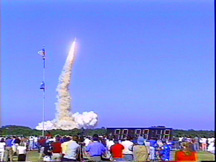
The Space Shuttle Discovery lifted off from Kennedy Space Center at 2:19 p.m. EST, October 29th. The sky was clear and the weather was great as Discovery took 8 1/2 minutes to reach orbit for the Unitied
...more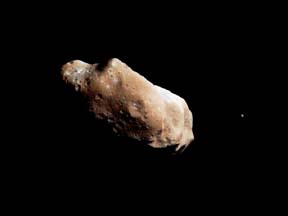
A moon was discovered orbiting the asteroid, Eugenia. This is only the second time in history that a satellite has been seen circling an asteroid. A special mirror allowed scientists to find the moon
...more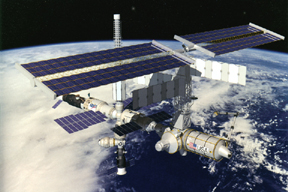
Will Russia ever put the service module for the International Space Station in space? NASA officials are demanding an answer from the Russian government. The necessary service module is currently waiting
...more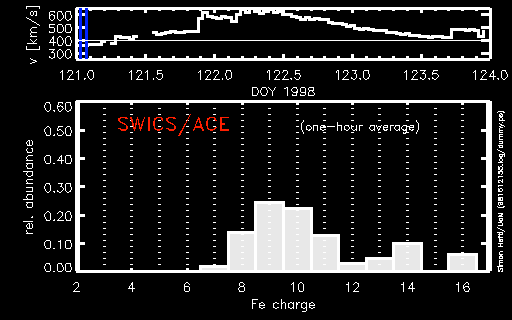
During a period of about two days in early May, 1998, the ACE spacecraft was immersed in plasma associated with a coronal mass ejection (CME). The SWICS instrument on ACE, which determines unambiguously
...more
J.S. Maini of the Canadian Forest Service has referred to forests as the "heart and lungs of the world." Forests reduce soil erosion, maintain water quality, contribute to atmospheric humidity and cloud
...more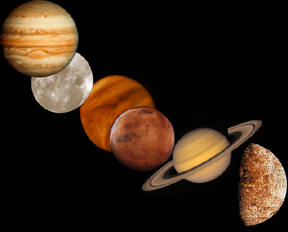
In late April through mid-May 2002, all five naked-eye planets are visible simultaneously in the night sky! This is includes Mercury which is generally very hard to see because of its proximity to the
...more


